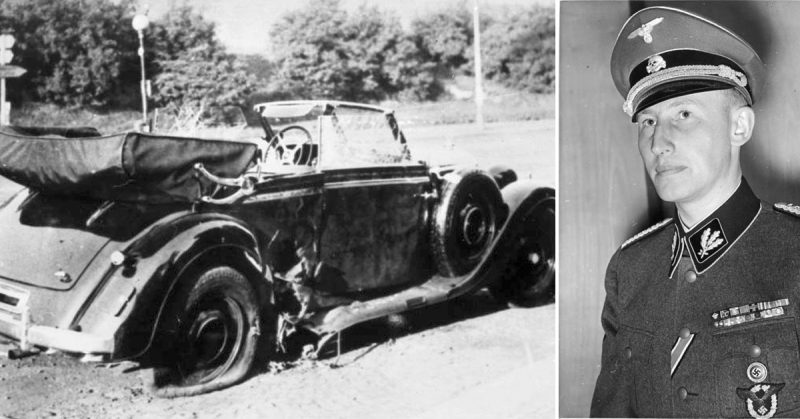Hitler gripped Germany and the occupied regions with the help of a network of killers who competed with him in inhumanity and barbarism. One such figure was Reinhard Heydrich, the head of the Nazi security police Gestapo and later the governor of the Protectorate of Bohemia and Moravia. Heydrich made his reputation for savagery and brutality by carrying out ruthless killings.
June 4, 1942, the day Heydrich was fatally wounded by the bullets fired by two Czechs who ambushed him while he was on his way to his office, is considered a day of momentous significance as it exposed the Reich’s high-ranking officials to public wrath and proved that they were not so invincible after all. Despite the fact the assassins were trained and facilitated by British Intelligence, the courage had to come from within the Czechs to face the occupiers and assassinate one of the most ruthless faces of the Nazi project.
Considered by many historians as one of the main architects of the Holocaust, Heydrich organised, rather engineered, the infamous Wannsee Conference in 1942. It was in this conference that the plan for the extermination of the Jewish population was formalised and legitimised. Even before the Wannsee conference, Heydrich had already been actively involved in a number of pogroms; the most famous of all took place in Germany and Austria and was known in history as the Kristallnacht.
On his very first day as the Deputy Reich Protector in Bohemia and Moravia in September of 1941, Heydrich ordered the execution of nearly 100 people; this tells a great deal about the damaged psychotic condition of the maniac. This and many such acts of sheer inhumanity soon earned him the title of “The Butcher,” and Heydrich famously had been reported to appreciate this nickname that quite suited his psychosis.
Heydrich’s hatred towards Jewish people had been with him all through his life; during his childhood, he was taunted for having Jewish ancestors. However, a detailed Nazi investigation into Heydrich’s ancestry proved that he was a pure Aryan and that he did not have anyone in his long chain of ancestors with Jewish blood. The desirable result of the Nazi investigation was apparently not enough to curb Heydrich’s detestation towards anything and everything remotely Jewish.
The Czech government in exile sought the help of British intelligence to counter the vicious Heydrich; the British willingly responded to the request and started planning to counter Heydrich’s growing evil influence in the region. British Intelligence soon launched the famous Operation Anthropoid to cut the head of the snake by attempting a direct assassination. After a period of training, a team was selected for the task, headed by two officers Josef Gabcik (Slovak) and Jan Kubis (Czech).
A total of seven men were airlifted and dropped in Czechoslovakia by the British, who then thoroughly planned the assassination in a forest before coming to a consensus. Heydrich was ambushed while he was on his way from his home in Panenske Brezany. Gabcik stood in front of Heydrich’s open-roof Benz with his submachine gun, but his gun jammed. Kubis then hurled a grenade onto the car; it landed in the rear of the car, seriously injuring Heydrich. Gabcik and Kubis were briefly chased by Heydrich’s driver Klein, but they quickly managed to escape to safety while Heydrich, with a ruptured diaphragm and shrapnel wounds to his spine, was taken to the hospital, where he later died on June 4, 1942.
The assassination of the Third Reich’s most feared man in the region sparked a countrywide manhunt involving thousands of German troops searching pretty much every possible location in Prague. Upon learning the news of the assassination, Hitler lashed out and ordered the execution of thousands of Jews and political prisoners. German troops in Czechoslovakia razed two villages suspected to have been harboring the assassins; all the men in the villages were killed while women were sent to extermination camps.
The assassins took refuge with two families in Prague before taking refuge in a Greek Orthodox Church; luck ran out for the men when one of their comrades, a resistance fighter, betrayed them and scores of Germans stormed the church. During the six-hour battle that left the church in ruins, Kubis and three others were killed in the courtyard while Gabcik and the remaining men committed suicide in the basement. The death of Heydrich certainly did not stop the Nazis’ killing spree in the region. However, it did spark many more resistance movements in Nazi-controlled Europe, especially Czechoslovakia.
